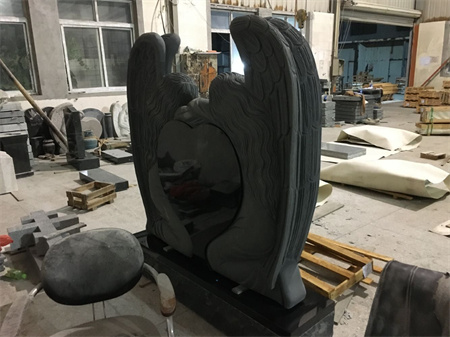
The Role of Granite in Islamic Cemetery Memorials
The Role of Granite in Islamic Cemetery Memorials
Granite, with its durability and timeless beauty, has long been a material of choice in memorial art, particularly within Islamic cemetery traditions. In the context of Islamic burial practices, where respect for the deceased is paramount, the use of granite goes beyond mere practicality—it reflects the reverence, solemnity, and permanence associated with the afterlife. As one of the hardest and most enduring stones, granite holds symbolic significance in Islamic funerary practices, offering not only a physical marker for the deceased but also a spiritual one.
In many cultures, memorials serve as a place to honor the dead, and Islamic traditions are no exception. However, Islamic burial rites place strong emphasis on simplicity and modesty, which often influences the choice of materials used in constructing gravestones. Granite, while a luxury in terms of its natural resilience, aligns perfectly with these principles. It offers a dignified, enduring tribute without veering into excess or ostentation, making it a fitting choice for those seeking both beauty and restraint in memorial design.
Granite’s natural strength is one of the primary reasons it is favored for Islamic tombstones. Over time, many other materials deteriorate due to weather, erosion, or environmental factors. Marble, for example, can become worn and lose its luster, while wood or clay markers are susceptible to decay. In contrast, granite remains virtually unchanged by time, keeping inscriptions legible and stones intact for centuries. This longevity resonates with the Islamic belief in the eternal nature of the soul and the life after death. By choosing granite, families ensure that their loved ones’ graves will stand as long-lasting symbols of respect and remembrance.
Beyond its durability, granite has a certain inherent beauty. Its diverse array of colors and textures, from deep blacks to warm, earthy browns and grays, offers a broad canvas for carving intricate patterns or inscribing meaningful verses from the Qur’an. These inscriptions are not mere words; they are part of the Muslim tradition of honoring the deceased with sacred texts. The high polish and fine grain of granite provide the perfect surface for such carvings, enhancing the clarity and elegance of the message. For many, this combination of permanence and artistry gives their memorials a sense of divine connection, offering comfort in the knowledge that their loved ones are remembered in a lasting and meaningful way.
In the Islamic world, inscriptions are often an essential feature of cemetery memorials. The words engraved on a gravestone can include the deceased’s name, their birth and death dates, and most significantly, religious prayers or quotes from the Qur’an. These sacred texts often carry deep spiritual meanings, offering a form of continued intercession for the soul of the deceased. Granite’s smooth surface allows for precise engraving, ensuring that these sacred words endure the test of time. As the granite stone stands firm, so too does the spiritual message it bears.
A key aspect of Islamic cemetery memorials is the simplicity and functionality of the design. The aesthetic choices made in memorial art are often understated, focusing on minimalism rather than grandeur. This reflects the Islamic view of death—not as an end to be celebrated with elaborate displays, but as a transition to the afterlife, which should be met with humility. Granite offers an ideal medium for such designs, as it can be shaped into a variety of forms, ranging from simple rectangular slabs to more intricate structures with delicate floral motifs or calligraphic inscriptions. The stone is often left unpolished or gently polished, contributing to its understated elegance.

Copyright © Huian Boda Stone Co.,Ltd All rights reserved.

ipv6 network supported